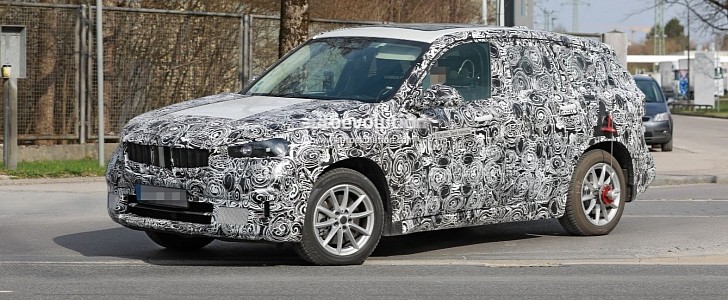Even though the i3 is unlikely to have a direct replacement, BMW will not exit the compact electric car market any time soon, focusing on developing EV versions for just about every model in its current lineup instead.
What started with the iX3, which is an electric version of the BMW X3, and the recently unveiled 4 Series Grand Coupe-based i4, will continue with iX1, which is obviously an electron-powered version of the BMW X1 crossover.
In fact, the i3’s place in the lineup might actually be taken by the 2022 BMW iX1, which will also have to battle similar offerings from Mercedes-Benz and soon Audi.
Essentially a battery-powered version of the soon-to-be-unveiled BMW X1 LCI, the iX1 was thought to come in a front-drive configuration, just like the model it is based on.
The updated UKL platform it uses is shared with MINI and all compact BMWs with transverse engines, meaning that an FWD configuration would have made the most sense, just like Mercedes-Benz did with the recently launched EQA.
The most recent spy photos of an iX1 pre-production prototype seem to suggest otherwise, though, at least judging by the odd sensors (likely for ESP calibration) fitted only on the rear wheels of the car.
That would suggest the compact electric crossover’s base version will be RWD, with more powerful versions getting an all-wheel-drive system thanks to a dual-motor option.
The base model is expected to be powered by a single motor delivering around 200 horsepower, while the AWD version should have between 250 and 300 horsepower at its disposal.
The top of the range version should feature a lithium-ion battery with around 65 or 70 kWh of juice, which should be good enough for around 500 km (310 miles) of range in the WLTP cycle.
A much larger battery might not fit in the UKL platform without serious modifications since the packaging is tight as it is, but BMW engineers might decide to sacrifice more of the available luggage space.
In fact, the i3’s place in the lineup might actually be taken by the 2022 BMW iX1, which will also have to battle similar offerings from Mercedes-Benz and soon Audi.
Essentially a battery-powered version of the soon-to-be-unveiled BMW X1 LCI, the iX1 was thought to come in a front-drive configuration, just like the model it is based on.
The updated UKL platform it uses is shared with MINI and all compact BMWs with transverse engines, meaning that an FWD configuration would have made the most sense, just like Mercedes-Benz did with the recently launched EQA.
The most recent spy photos of an iX1 pre-production prototype seem to suggest otherwise, though, at least judging by the odd sensors (likely for ESP calibration) fitted only on the rear wheels of the car.
That would suggest the compact electric crossover’s base version will be RWD, with more powerful versions getting an all-wheel-drive system thanks to a dual-motor option.
The base model is expected to be powered by a single motor delivering around 200 horsepower, while the AWD version should have between 250 and 300 horsepower at its disposal.
The top of the range version should feature a lithium-ion battery with around 65 or 70 kWh of juice, which should be good enough for around 500 km (310 miles) of range in the WLTP cycle.
A much larger battery might not fit in the UKL platform without serious modifications since the packaging is tight as it is, but BMW engineers might decide to sacrifice more of the available luggage space.


























